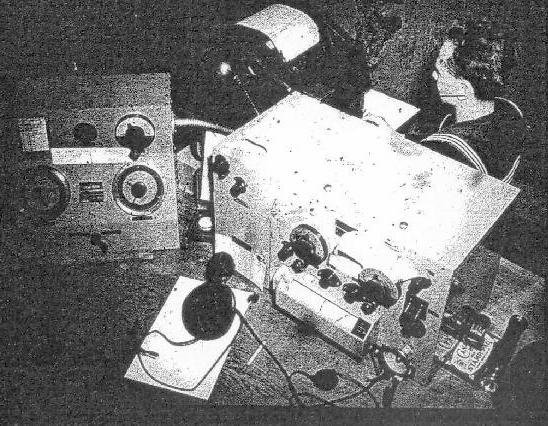| Photo 3: This was the high speed Morse position at Gordon Head.
Left to right: Canadian Marconi CSR4 receiver, Morse bridge, UG6
undulator, Morse bridge /undulator and CSR4 receiver. Download
image to enlarge. (DND photo #PA-193143 submitted by Tom Brent
)
Undulators were actually ink tape
recorders which were used to copy high speed Morse, sent either as a single
or dual frequency shifted signal. They used an ink nib, moving at a very
fast rate which would inscribe the paper tape. Ink flowed constantly and
the pen was held against the paper which was pulled past the pen. The track
produced by the pen when no signal was present was a Space. When keying
commenced, the pen moved a few millimeters to the Mark position. The tape
was then scanned visually and the Morse characters were transcribed unto
a message pad usually by typewriter.
The model UG6 was in use as early as 1942. |








